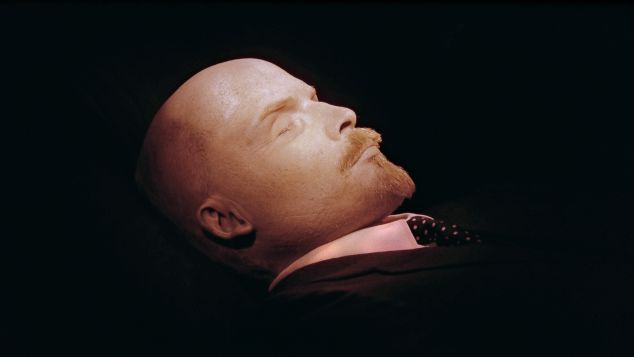Moscow (CNN)
Visiting the attractions of Moscow’s Red Square can be expensive, but there’s one that remains free: the embalmed body of communist leader Vladimir Lenin.
A century after Lenin led a revolution that changed the world, his preserved corpse remains a subject of curiosity and conflict in Russia, but time could be running out on this unusual Soviet-era spectacle.
Today, visiting Lenin is heavily regimented.
After navigating through metal detectors and a line that nearly stretches around one corner of the Kremlin wall, visitors walk down a flight of stairs into a tomb of dimly lit polished stone. After being told by a guard to take hands out of pockets, visitors then move right to find themselves in a cube-shaped chamber, wherein lies the man himself.
Lenin’s body appears strikingly small for a man of such historical significance (he was 5 feet 5 inches or 165 centimeters tall) and he looks more like one of Madame Tussauds’ wax figures than a well-preserved corpse.
Beneath bulletproof glass and sharply dressed in the new suit he was outfitted in this spring, his flesh is luminous against the room’s dark red and black trappings.
There’s little time to dwell on details. Guards keep guests moving in a U-shape around the elaborate casket, enforcing reverence with a strict no-talking, no-photography, no-cellphone policy until exiting the mausoleum, where the sunlight in Red Square is jarring even after only a few minutes underground.
November 2017 marks the 100th anniversary of the October Revolution (the month discrepancy is the result of a Lenin-era revision to Russia’s calendar system); and 93 years after his death and display in Red Square, the resting place of the Father of the Revolution is now a UNESCO World Heritage Site and popular tourist destination.
Communism in the flesh

Taking photos of Lenin’s body isn’t permitted. This rare shot shows the revolutionary leader in October 1991. AFP/AFP/AFP/Getty Images
Not so long ago, it likely would have been shocking to Russians that Lenin’s Mausoleum would be just another highlight on a travel to-do list, squeezed in between St. Basil’s selfies and a stroll through GUM department store.
The mausoleum once held almost religious gravity in Russian culture, with Soviets waiting in the cold for hours just to catch a glimpse and leave a flower.
Today, it’s a less somber affair, attracting the morbidly curious or history buffs who want to see communism in the flesh. Long lines are common, but they’re more likely the result of very limited opening hours than of extremely high demand.
There are Russian voices in the crowd, but they’re mingled with the chatter of a variety of other languages, laughing and just killing time waiting to get inside. Apart from the occasional earnest Lenin devotee, most solemnity is merely forced by some very serious mausoleum guards.
Attitudes toward Lenin have transformed so much, in fact, that visitors to Moscow may eventually find the door of the Lenin Mausoleum closed for good.
A poll in March 2017 found that at least 58% of Russians are in favor of finally removing Lenin from display, but there’s indecision over whether he should be buried with other communist bigwigs at the Kremlin or, as was his own wish, buried next to his mother in St. Petersburg’s Volkovo Cemetery.
Beyond his embalmed body, there’s no shortage of other glimpses of Lenin around the Russian capital, thanks to strong public support for preserving monuments in his honor.
Muzeon Park of Arts has plenty of busts and statues of the communist leader to enjoy while taking a leisurely walk to Gorky Park.
- Advertisement -
- Advertisement -













